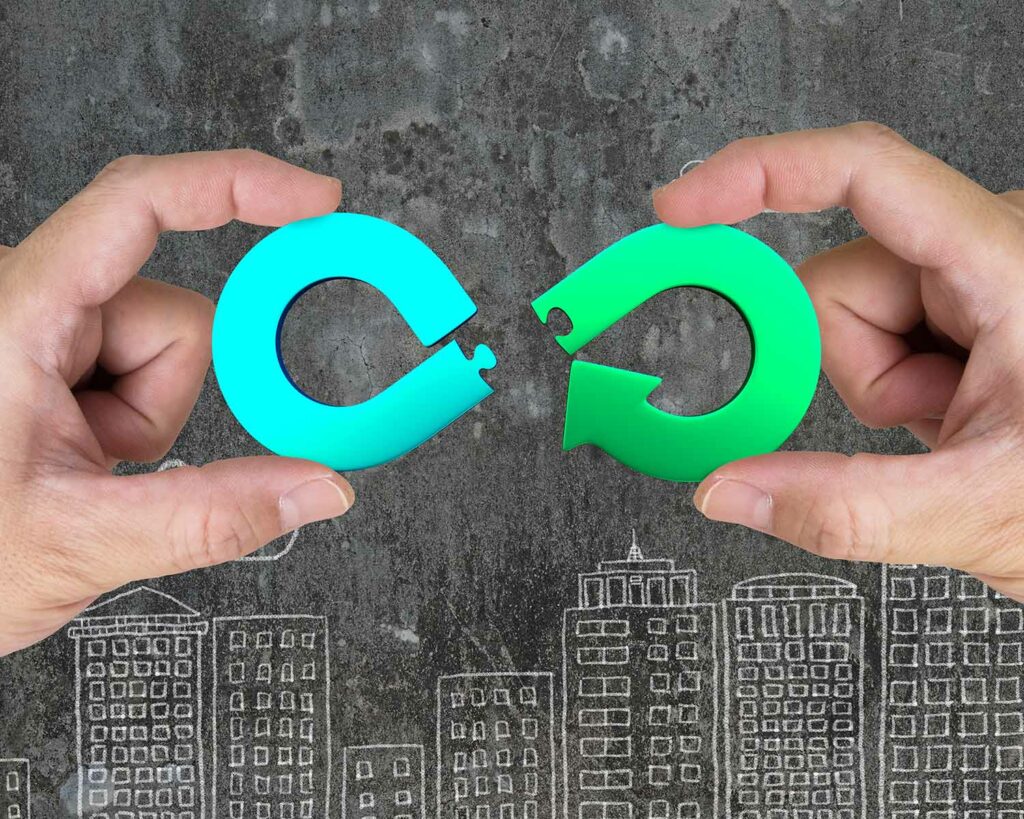Reducing waste and bringing back products is nothing new for business. The very idea of the reverse supply chain has been around for decades. For example, when La Redoute launched their e-commerce website in 1994 in France, they had already been dealing with returned products from their paper catalogue range for years. Equally, Littlewood’s in the UK started their home shopping offer in 1932 sending out catalogues from 1971, all with reverse logistics, albeit basic!
These reverse flows originated from product returns, recalls and the guarantees behind ensuring product quality, but the environmental argument for such flows is a societal level mission. Companies have been quick to realise that their current supply chains are not equipped to deal with this new circular challenge.
In recent research, we have identified a number of challenges on this journey to circular supply chains:
1. Supply chain relationships will change with the arrival of leasing- and renting-based systems enabled by digital technologies.
Issues will arise around how to incentivise the utilisation of assets (pay per use type models), especially when suppliers are involved in the maximisation of this use of products. A whole chain approach will be required. Leaders in this area are Rolls Royce “Power-by-the-Hour” aero-engines or Philips “Pay per Lux”, but the opportunities in many sectors are yet to be realised.
2. Creating structural flexibility in supply chains by engaging new actors who might be small and local.
Difficulties including identifying and working with new partners with the right skills and capabilities to deal with returned products in a way that minimises environmental impacts and generates value, again with a whole chain view. Globechain is one example of this, helping reduce the search costs for new partners.
3. New open loops need to be developed.
Loops that are not just closed (within the same company, supply chain or even sector) but open in order to maximise the chances of retaining and generating value. This might also mean switching between biological (organic processing of materials) and technical loops (mechanical processing).
4. Close collaboration between sectors that don’t normally work together.
Cement and tires is a good example, but this needs to be far more extensive. Different norms and even cultures can prevent organisations from working together, and yet this might be vital to resolving some of these issues. Creating standards that industries share can be notoriously difficult to do. The internet provides a common platform for data input and outputs, yet we are a very long way from the same interoperability of waste information and processing.
5. Is a circular supply chain approach working? Measurement is another big challenge.
We found that reconciling business metrics with regional and national metrics on resource use efficiency and waste reduction is problematic. In fact, looking at what companies report on shows a very limited attempt, so far, to integrate circularity thinking into performance measurement, which for the moment accounts for changes in inputs and outputs of various resources from energy, water, waste and so on. Really embedding circular economy requires a rethink on which metrics are being used, i.e. the value of returned and recovered materials into supply chains, and ways companies and suppliers share the benefits of this returned value.
Dealing with waste resources is expensive, resulting in taxes on both business and the general public. Although punitive taxes can help reduce waste, and are certainly necessary, they are often not high enough to change behaviours. At the same time, consumers are expecting business to react to their concerns over plastic waste, oceanic pollution and climate change.
One way or another, companies need to find a path between these concerns and challenges, as well as their own survival.
Taking a life cycle, whole chain view is paramount … being holistic
Specific investments and strong collaboration between supply chains, with a holistic view, are needed to tackle these challenges. Focusing on the whole chain is key to success, and this is a central link between supply chains and circularity. Well planned and executed supply chain management takes into account total costs and optimises the whole rather than individual parts of a chain. The same goes for circularity, a solution in one part of the cycle might create issues elsewhere (shifting burdens, e.g. switching plastics to glass bottles massively increases the carbon footprint for Coca Cola overall, they claim).
So where next?
The knowledge on how to create and maintain successful circular supply chains is out there. Building on decades of experiments and experience, business can put in place the right strategies and processes. However, alongside strategic initiatives and process redesign, there also needs to be a mindset shift across supply chains. This shift might entail a different set of arguments and logics, and ultimately a transition in supply chain cultures, which is going to take quite a bit longer than some would like.
This article was adapted from Miemczyk’s “Can supply chains be circular?” in ESCP Deloitte’s Look’Around on the circular economy.
Feature photo credit: Tsung-Lin Wu – stock.adobe.com.
